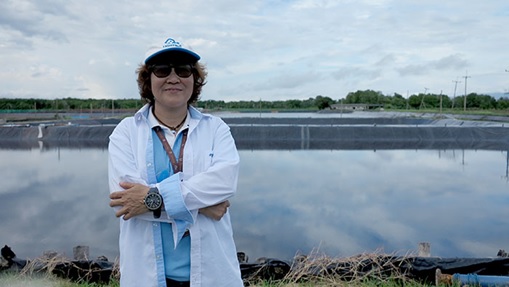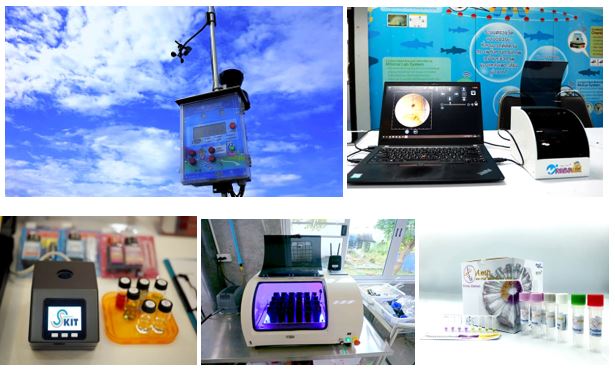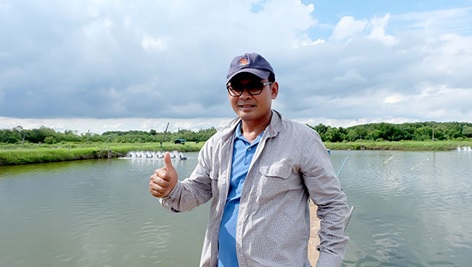Aquaculture plays an important role in the Thai economy. To enable sustainable growth of this important industry, it is necessary to strengthen the production system by increasing the sustainable farming capacity of farmers and the adoption of Aquaculture 4.0. To support this effort, NECTEC-NSTDA developed Aqua-IoT, an IoT-based monitoring system for physical, chemical and biological qualities of water.

Dr. Supanit Porntheeraphat, Principal Researcher of NECTEC Digital Agriculture Technology Research Team, gave the background that the project to develop a digital aquaculture system was initiated at NECTEC back in 2010 at the height of disease outbreaks that significantly damaged Thailand’s aquaculture industry and overall economy. Since then, the system has been continually developed and improved.
The key feature of Aqua-IoT is the integration of key data – physical, chemical and biological water qualities and weather – into one single dashboard that enables users to understand the relationship between the data, analyze the data and make informed decisions.

Dr. Supanit further explained that Aqua-IoT consists of four main systems: Water and Weather Monitoring System, MuEye System, ChemEye System and Minimal Lab System. The first system monitors water quality – temperature, pH level and dissolved oxygen - and weather – wind speed and direction, light intensity and rainfall. These parameters are keys for aeration and feed management. MuEye System is designed to monitor the growth of aquatic animals and parasites, whereas ChemEye is a chemical reader for monitoring the levels of nitrite, ammonia, chlorine, phosphate and pH in the pond. Minimal Lab is a bacteria growth monitoring system that helps users manage probiotic application. The system is also integrated with disease diagnostic tests for shrimp and fish developed by BIOTEC-NSTDA with test results automatically sent to an online database for users to check via a web browser and a message application.
Aqua-IoT technology has already been transferred to companies, making the devices commercially available. The system costs around THB 200,000 per pond. Its benefits include cost saving on energy and feed, as well as disease risk reduction. Return on the investment can be expected on the first crop.

In 2020, the research team started introducing Aqua-IoT to aquaculture farmers in the eastern region. Dr. Supanit said that working closely with farmers enables researchers to better understand their requirements and needs, leading to the development of other technologies for supporting aquaculture farming. Examples of technologies being developed are an automatic shrimp counting machine for managing pond density and a lift net machine that automatically measures shrimp density for feed and water quality management.

Mr. Udon Songserm, owner of Wasin Farm in Rayong Province, revealed his experience using Aqua-IoT. After having the system installed in one of his ponds, he clearly sees the benefits of cost, time and labor saving. He no longer needs to be on site all the time to monitor his ponds. Dissolved oxygen data allows him to activate aerators only when needed as opposed to always having the machines on, thus cutting back energy cost considerably. Data on chemical and biological properties of water prompts him to take appropriate actions to avoid losses caused by toxic conditions and disease outbreaks. Mr. Udon also added that some data obtained from this pond, such as temperature, can be applied to other ponds in the neighborhood. Temperature directly affects dissolved oxygen and therefore can be used for aeration management, for instance.
